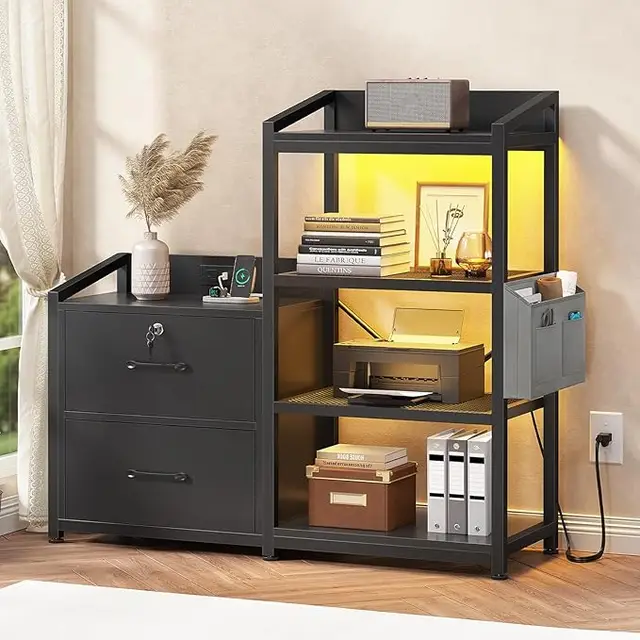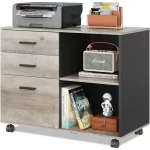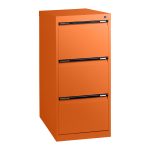Different Types of Filing Cabinets for Home Offices
When setting up a home office, it’s vital to choose the right type of filing cabinet. These cabinets help keep your documents in order and save on precious real estate in your home workspace. There are mainly two types of home office filing cabinets you should consider: vertical and lateral cabinets. Each serves a unique purpose and offers different benefits for your home office storage needs.
Vertical Filing Cabinets: Ideal for Space Saving
Vertical filing cabinets are tall and narrow, perfect for small home offices. They usually have two to four drawers, with files arranged front to back. This design takes up less floor space, making it a savvy choice for space-challenged areas. These cabinets are great if you have limited room but still need to organize important papers securely.
Vertical cabinets are also budget-friendly. They cost less than some other storage options, making them a smart pick for home office setups with tight budgets. As reported by Avios and similar resources, consumers find this type helpful for slotting into narrow spaces without sacrificing document organization.
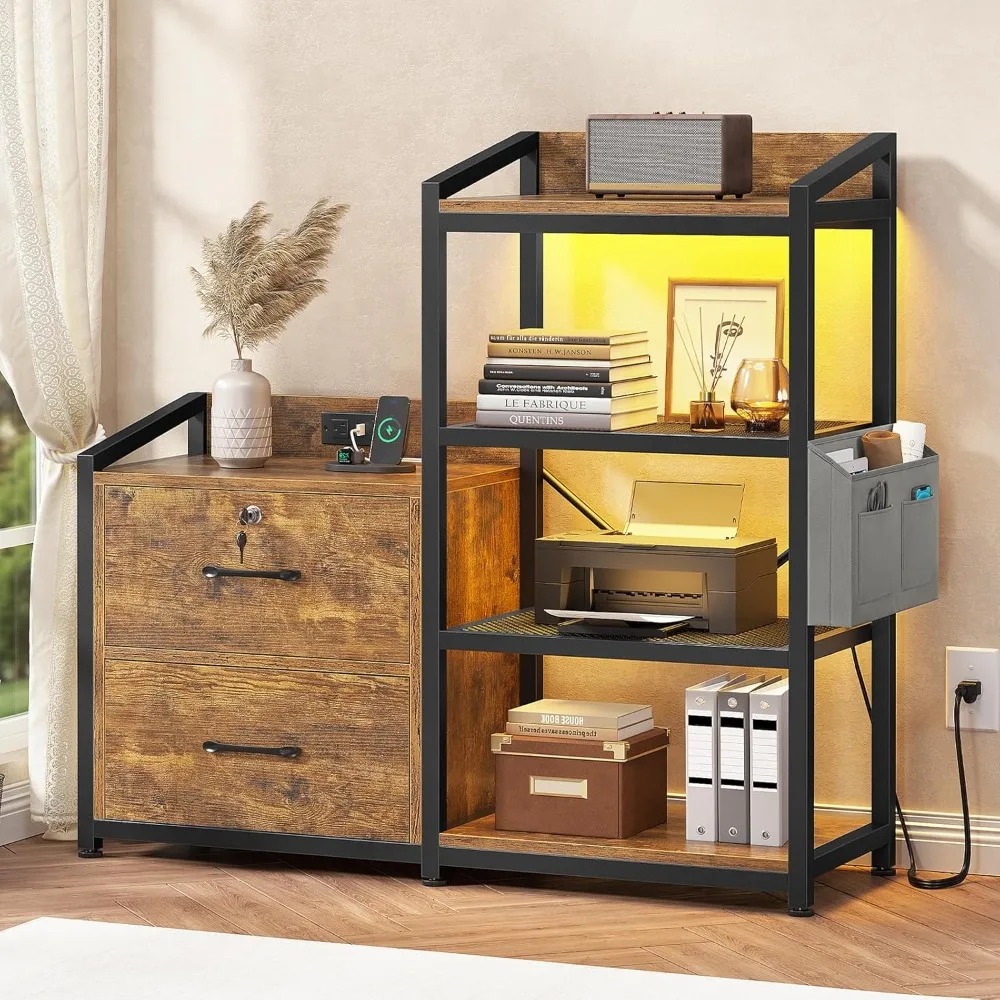
Lateral Filing Cabinets: Best for Easy Access and Larger Capacity
Lateral filing cabinets provide wide drawers for your files. They offer more storage space than vertical cabinets and can hold both legal and letter-sized documents side by side. Lateral cabinets allow for front-to-back and side-to-side filing, making file access quicker and more convenient.
This type is ideal if you need to store large volumes of paperwork or want easy access to your files. According to industry insights, lateral filing cabinets are about 25% more spacious than vertical ones. They fit well in larger home offices or spaces that can spare a bit more floor area for storage.
Both vertical and lateral filing cabinets come with locking mechanisms for security. They often feature metal construction for durability and ball-bearing slides for smooth drawer operation. With options tailored to various needs, deciding which type suits your home office is a matter of assessing your space, storage requirements, and personal preferences.
How to Choose the Right Filing Cabinet for Your Home Office
Selecting the ideal filing cabinet is crucial for home office organization. Consider your specific needs, the room’s dimensions, and security features. Here’s how you can choose the best one for your space.
Assessing Your Storage Needs
Start by estimating the volume of documents you plan to store. Do you have bulky files or just need space for occasional paperwork? Answering this determines the size and type of cabinet you need. Remember, lateral cabinets hold more, while vertical options save floor space.
Considering Space Limitations
Measure your home office space carefully. A vertical cabinet suits tight spots, sliding easily into corners or alongside desks. Opt for lateral cabinets only if you have ample room. They need more wall space but offer greater access to your files.
Ensuring Security with Locking Mechanisms
Security is paramount when storing sensitive documents. Look for cabinets with sturdy locks to keep your files safe. Both vertical and lateral cabinets usually come with locks. Consider this feature non-negotiable for peace of mind.
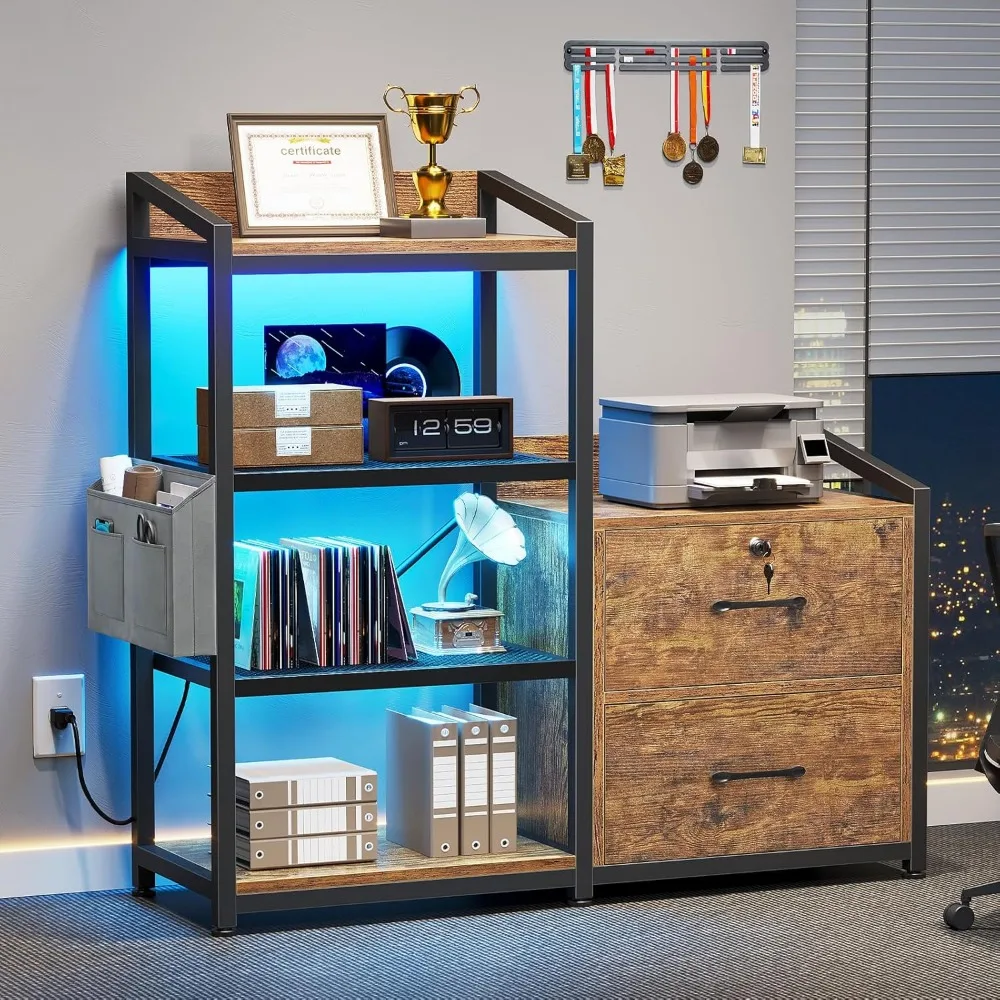
Features to Look for in a Quality Filing Cabinet
When you’re in the market for a home office filing cabinet, quality should never be compromised. Focus on features that ensure longevity, functionality, and aesthetic appeal. Below are key aspects to consider when choosing your filing cabinet.
Durable Metal Construction
Durability is a cornerstone of great filing cabinets. Metal construction stands up to years of use. It resists wear and tear, and it’s sturdy enough to hold heavy files. When checking out home office filing cabinets, pick ones made of metal for long-lasting service.
Smooth Drawer Operation with Ball-Bearing Slides
It’s frustrating when drawers stick or jam. Look for cabinets with ball-bearing slides for smooth opening and closing. This feature lets you access your files with ease, avoiding any struggles with stuck drawers.
Stylish Designs That Complement Home Office Decor
Your filing cabinet should blend with your home office style. Manufacturers offer sleek, modern designs that enhance workspace aesthetics. Choose a cabinet that vibes with your home office decor, making it both a practical and stylish addition.
Space Efficiency in Home Office Filing Solutions
Maximizing Storage in Compact Spaces
When working with a small home office, making the most of every inch is key. Look for home office filing cabinets that are designed to fit into tight spots. Vertical filing cabinets are especially valuable for their tall, slim profiles which make them an ideal choice for nooks. They hold plenty without sprawling out, leaving you room to move and work comfortably.
Another trick for compact spaces is to use stackable filing modules. These can be stacked vertically, offering flexibility and taking up less floor space. Getting creative with wall-mounted filing solutions can also be a game changer for tiny offices.
Organizing Files for Easy Retrieval
An organized filing system saves time and reduces stress. Use clear labels on each drawer for quick identification of contents. Inside, consider using hanging file folders which can be color-coded. This not only helps segregate documents according to their categories but also allows you to pull out individual folders with ease.
Make it a habit to purge and reorganize files regularly. This ensures that you’re not storing outdated documents that can clutter your filing cabinet and hinder easy retrieval of the current files.
Selecting the Appropriate Cabinet Size
Choosing the right sized filing cabinet is crucial. First, assess the amount of paperwork you handle. If paper documents are a large part of your work, a larger lateral filing cabinet may be the best bet. For digital-heavy workflows with less paper, a smaller vertical cabinet or even a multi-purpose unit with fewer drawers can suffice.
Always keep future needs in mind. If your document load is growing, picking a filing cabinet with slightly more capacity can be a wise decision. Measure your space and remember to account for drawers opening. A cabinet that’s too large may hinder movement, while one that’s too small will be outgrown quickly.
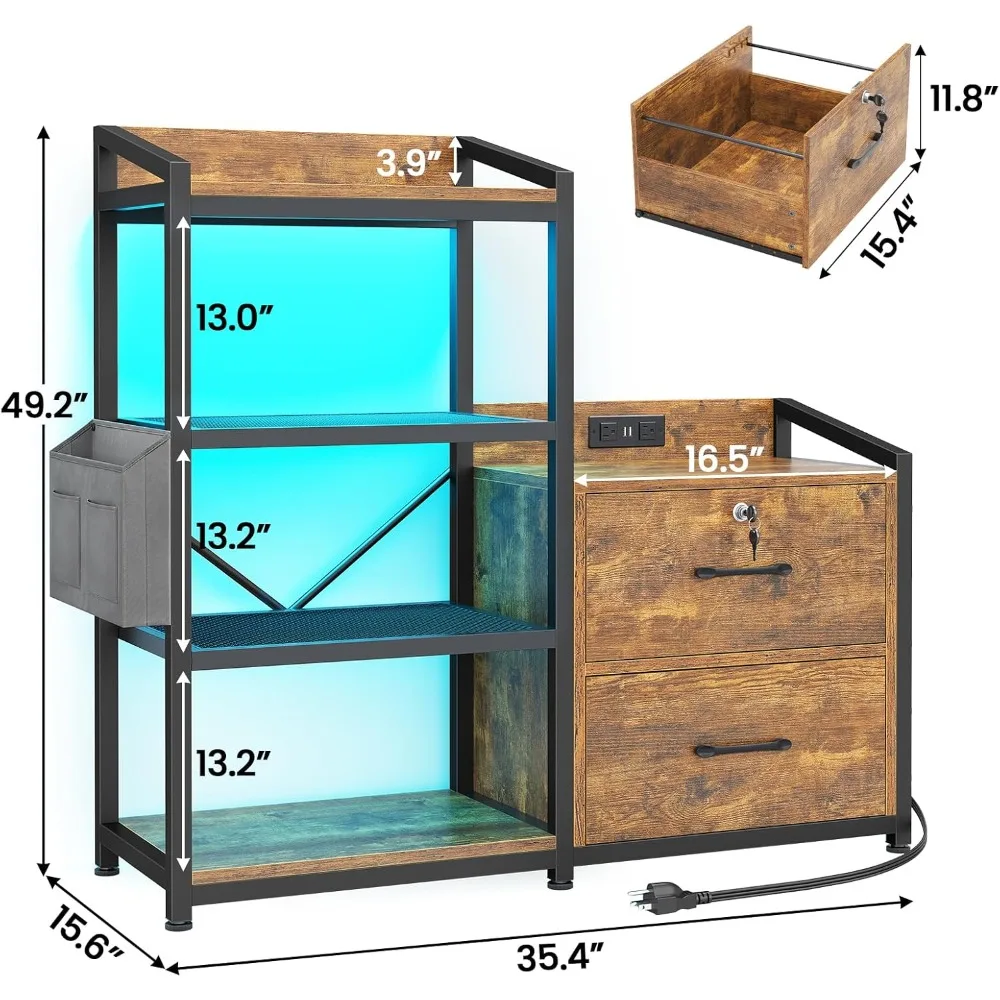
Keeping Your Filing Cabinet Organized and Functional
Maintaining order in your home office is key to productivity. A well-organized filing cabinet can save you time and reduce stress during your workday. Here are some tips for keeping your files in tip-top shape.
Best Practices for Labeling and Categorizing Files
Start by grouping your documents into clear categories. This could be by project, client, or document type. Once grouped, label each drawer or folder with a simple, descriptive name. Avoid long titles; keep them short and to the point. Use labels that stand out and are easy to read at a glance. Color-coding can also help you find folders faster. Remember, consistent labeling helps you and others locate files quickly.
For digital files, use a similar system. Name files and folders clearly on your computer. This makes electronic searches quick and straightforward. Back up electronic copies routinely, in case of physical damage to paper files.
Routine Maintenance and Cleaning Tips
Your filing cabinet needs regular check-ups. Once a month, take a moment to check for any files that can move to storage or shredding. This keeps your drawers from getting too full. When it’s time to clean, use a soft cloth to wipe down the exterior. Avoid harsh chemicals that can strip paint or cause rust.
Check drawer mechanisms occasionally. If drawers stick, a little lubricant can fix them. Keep liquids and food away from your filing cabinet. Spills can damage paperwork and cause metal cabinets to rust.
By following these organization and maintenance tips, you’ll keep your home office filing cabinets in great shape. This ensures that your workspace stays efficient and your documents remain secure and easy to access.
Where to Purchase and How to Install Your Home Office Filing Cabinet
Exploring Retail Options: Online vs. In-Store
Deciding where to buy home office filing cabinets involves two main options: online stores and physical retailers. Online shopping offers convenience, more variety, and sometimes better deals. You can compare different models, check reviews, and shop without leaving your home. However, you won’t get the feel of the product before it arrives.
In-store purchases let you see and touch cabinets before buying. This helps ensure the size, style, and build meet your needs. The downside includes limited stock and potentially higher prices. Weigh convenience against the value of a firsthand look to choose the best buying method for you.
Delivery and Installation Services
Once you’ve selected the perfect filing cabinet, consider how to get it home and set up. Many online and large in-store retailers provide delivery services. Some may charge a fee while others include it in the purchase price. Read delivery policies for clarity on timings and charges.
Installation can be another hurdle. Cabinets often arrive assembled, but some may require setup. If you’re not DIY-inclined, seek services that include installation. Ask retailers about installation options and costs. Ensure they give clear instructions if you decide to install it yourself.
Remember to account for both delivery and installation in your overall budget. Factor these into your decision to avoid unexpected costs later on.
Frequently Asked Questions About Home Office Filing Cabinets
Maintenance and Care Advice
Caring for home office filing cabinets ensures they last long and function well. Wipe them regularly with a soft, damp cloth; avoid harsh chemicals. For metal cabinets, keep them dry to prevent rust. If drawers get tough to open, apply a simple lubricant. Clean up spills quickly to protect documents and avoid metal damage.
Making the Most of Small Home Office Spaces
Maximize your small home office space with the right filing cabinet. Choose vertical cabinets to save floor space; they fit in narrow areas well. Use wall-mounted filing systems or stackable options to utilize vertical space. Keep cabinets near your desk for easy access without cluttering the room.
Understanding the Security Features of Filing Cabinets
Security is critical when storing sensitive documents. Look for filing cabinets with strong locks to protect your information. Metal filing cabinets often have key or combination locks for added security. This keeps important files safe from unwanted access. Check locks regularly to ensure they’re working properly.
